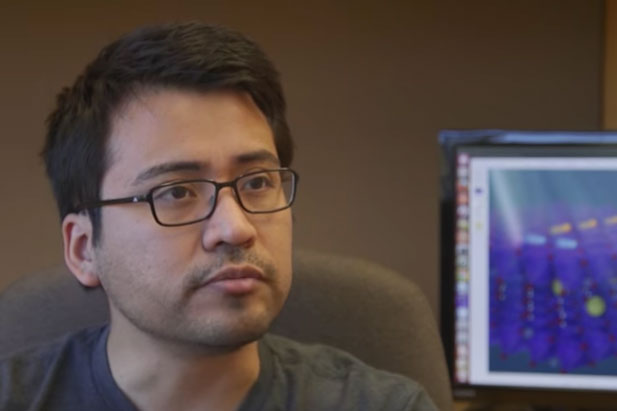
A Florida State University researcher played a major role in a new discovery in how to produce pure hydrogen, a green energy fuel, by splitting water.
FAMU-FSU College of Engineering Assistant Professor of Chemical Engineering Jose Mendoza-Cortes, partnering with a Penn State University research team, has investigated new ways to create clean energy, particularly hydrogen fuel. In particular, he and his colleagues found that by tinkering with a transition metal alloy, they could effectively and efficiently split water molecules and produce pure hydrogen.
Their work was published in the journal ACS Nano.
Mendoza-Cortes has been conducting clean-energy research for several years and recently theorized a way to build more efficient storage for hydrogen fuel.
Currently, hydrogen is often produced by steam reforming methane. However, that results in the release of carbon dioxide into the atmosphere. Other times, platinum is used as a catalyst for this splitting process, but it is very expensive and requires large amounts of energy.
Mauricio Terrones, a professor of physics, materials science and engineering at Penn State, had been interested in exploring how the compound molybdenum disulfide could be used to split water. However, he and his team realized that the compound’s protons did not overlap well with that of hydrogen.
That’s where Mendoza-Cortes entered the picture.
The FSU scientist had long been an admirer of Terrones’ work and had written him an email at the suggestion of a colleague at the National MagLab who knew Terrones. Terrones called Mendoza-Cortes, who is a theorist, and explained the problem he was running into with the molybdenum disulfide.
“They had this mystery for us,” Mendoza-Cortes said. “They had been running these experiments and had this lingering question.”
The scientists had also been experimenting with adding tungsten and graphene to the molybdenum disulfide, so Mendoza-Cortes began running simulations on how much of these elements could be added and how it would affect the ultimate chemical reaction.
“We had to simulate every possible step the reaction could take,” he said.
Mendoza-Cortes and Terrones ultimately determined that the best way to split the hydrogen was to create an alloy with the molybdenum disulfide. They created a thin film with alternating graphene and tungsten-molybdenum layers.
That created a much more efficient process and lowered the electrical voltage required to split the water from 200 millivolts with pure molybdenum disulfide to 96 millivolts with the tungsten-molybdenum alloy.
“This has the promise of being as good as platinum,” Mendoza-Cortes said.
Research teams from Tsinghua University in Beijing, China, and the Institute of Carbon Science and Technology in Nagano, Japan, also contributed to this research.




